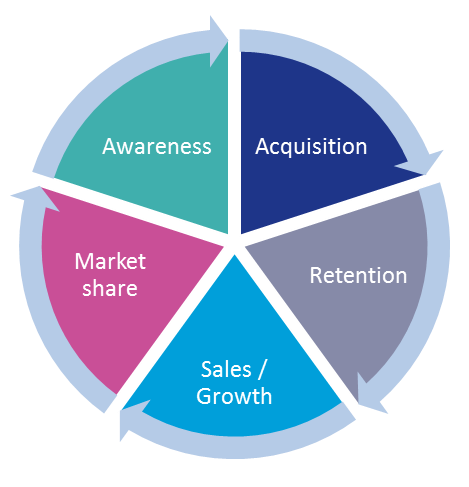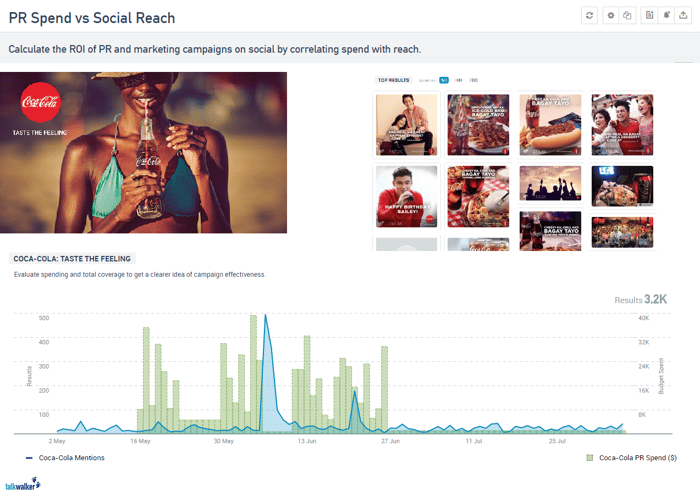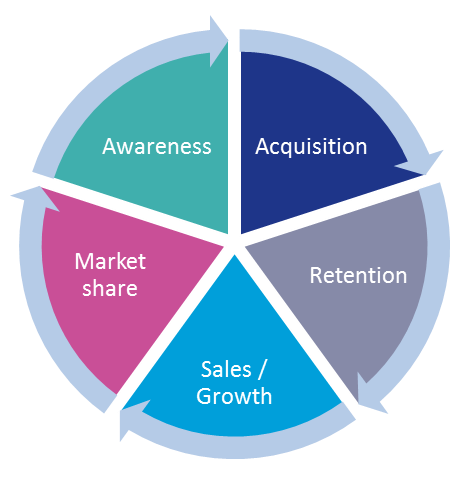Marketers can now tie spend to revenue. In fact, it’s becoming a mandate.
With spending on digital marketing in particular expected to grow by 10% this year, proving the business value of marketing efforts is now pivotal for all online marketers.
But this doesn’t mean it’s easy. Especially, in areas such as social and content, linking marketing efforts to business impact can be time consuming and hard to prove.
Our solution? New Talkwalker Business Impact Metrics.
Business Impact Metrics help brands save time and prove marketing success by overlaying business KPIs onto social data metrics for easy and immediate analysis.
Whether you want to see the connection between social marketing and in-store sales or online registrations and hashtag campaigns, business impact metrics help you demonstrate the success of marketing campaigns by creating direct links with established performance indicators. Even beyond marketing, this new feature allows for any time stamped data set to be added to a graph – from political polls to weather data - making the potential use cases limitless.
Here are 5 powerful ways marketers can start measuring the business impact of online marketing - from building awareness all the way through to increasing market share.

1. Awareness – Is your spending leading to coverage?
The first step of any campaign is building awareness. Without it, your brand product, or service remains hidden in the shadows.
But what does success look like when comparing coverage to spending?
PR Spend + Online Campaign Coverage
You’ve spent thousands on a PR/Marketing campaign to build awareness of your brand online but has it actually paid off?
The below graph is an example of a PR Spend vs Brand Awareness indicator that helps you prove the true impact of any brand awareness campaign.

This view of the data not only allows marketing and PR professionals to prove the value of spending, but also helps marketers focus resources towards the most effective channels and tactics.
2. Acquisition – Are your social efforts driving conversion?
For many B2B and B2C companies, lead generation takes place on websites. Whether it’s a registration form or a demo request, these are the nuts and bolts behind a successful online marketing strategy.
But is there a clear link between your social marketing and PR efforts and actual lead generation?
Lead Generation + Social Activity
Plotting lead generation data from Salesforce or Google Analytics against online (and even offline) mentions helps you to understand this instantly.
Being able to quickly see which marketing activities actually generate leads and opportunities is invaluable when developing a robust yet flexible marketing strategy.
3. Retention – Is your online reputation pushing customers away?
It’s no secret that acquiring a new customer is several times more expensive than retaining a customer. But like prospects, existing customers can of course be affected by a brand’s perception online.
Customer Retention + Online Sentiment
Whether your online reputation is positive or negative, understanding the impact of reputation on retention helps ensure that you don’t lose your best customers.
Tracking the impact of negative PR activity on customer retention rates can not only give sales and account managers an early warning of events that could impact revenue, it also provides marketing and PR professionals with another measure to prove the value of reputation management efforts.
4. Sales – Do your marketing efforts drive actual sales?
When trying to prove the ROI of an online, offline or multi-channel marketing campaign, being able to show a direct link to actual sales is powerful. Gone are the days when online marketing led to online sales and traditional marketing lead to in-store sales. The distinctions are non-existent and marketers need a way to prove value in this constantly shifting marketing landscape.
Sales Data + Campaign Reach
The combination of Talkwalker’s extensive online and offline coverage and the ability to overlay sales data on top of broader marketing metrics, gives marketers the ability to connect campaigns to sales - both online and in-store. The below example shows how a marketer could easily track the impact of a new product launch on in-store sales:
Visualizing both metrics on one graph gives all stakeholders a clear view of the direct impact of marketing on any sales channel.
5. Market Share – Is marketing giving you a strategic advantage?
The focus so far has been on ROI metrics for day-to-day use by marketers. But there is also value to be found at a higher level and over a longer term.
Stock Price vs Online Sentiment
By correlating overall online (and even offline) brand or product mentions/sentiment with high level business indicators such as market share or stock price, businesses can find clearer links between major marketing and PR events and overall business impact.
With so much data now available, the onus is now on marketers to prove value. Talkwalker’s business impact metrics make this process painless and powerful.
To learn more about how your business can start benefitting from the power of combined metrics, have a free personalized demo with one of our expert consultants.
Note: Data in all charts is hypothetical and not based on actual business data of brands mentioned




